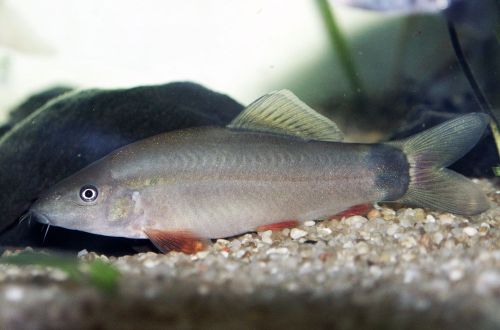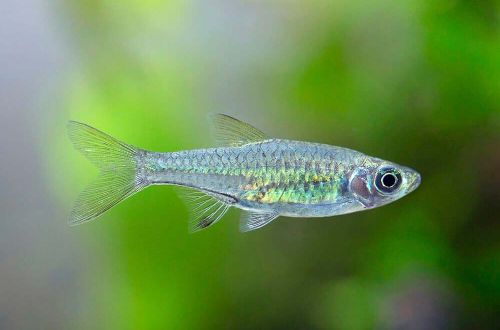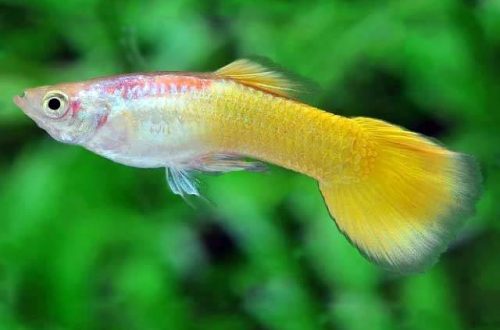
sun char
Botia Eos or Sunny char, scientific name Yasuhikotakia eos, belongs to the Cobitidae family. Rarely seen for sale, largely due to nondescript coloration and compatibility issues with other fish. Otherwise, it is an unpretentious and hardy species that is quite capable of successfully settling down in a home aquarium.

Contents
Habitat
It comes from Southeast Asia from the territory of Laos, Cambodia and Thailand. It lives in the middle and lower Mekong basin. It occurs in the main riverbeds and their tributaries. Prefers regions with a moderate current, silty sandy or rocky substrates (soil composition changes depending on the season and during migrations).
Brief information:
- The volume of the aquarium – from 100 liters.
- Temperature – 23-28°C
- Value pH — 6.0–7.5
- Water hardness – soft (2-12 dGH)
- Substrate type – sandy or rocky
- Lighting – subdued
- Brackish water – no
- Water movement is weak
- The size of the fish is 10–11 cm.
- Nutrition – any drowning
- Temperament – inhospitable
- Content in a group of at least 5 individuals
Description
Adult individuals reach a length of about 11 cm. Sexual dimorphism is weakly expressed. Females are somewhat larger than males; during spawning, the latter acquire a dark blue color and red edging of the fins. The main color of fish artificially bred in commercial aquariums is gray-blue. At the base of the tail is a dark “belt”. Fins translucent reddish. Young fish have thin vertical stripes on their sides, which disappear as they grow older.
Its useful to note, that the colors of wild individuals differ markedly. Their color is yellow or orange, which is reflected in the name of this species “Sunny” or “Eos” – the Greek goddess of dawn.
Food
An omnivorous and undemanding species. Accepts dry, frozen and live food, the main thing is that they are sinking and contain herbal supplements. As the latter, you can also use homemade vegetables and fruits fixed at the bottom. For example, pieces of zucchini, spinach, melon, cucumber, etc.
Maintenance and care, arrangement of the aquarium
The volume of the aquarium for a group of 5 fish should start from 100 liters. The design is arbitrary, provided that suitable shelters are provided. Which can be snags or heaps of stones that form grottoes, crevices. Ordinary ceramic pots turned on their side, or hollow tubes, are also suitable. In general, everything where the fish can hide.
Favorable conditions of keeping are achieved in conditions of very clean water, moderate currents and a subdued level of illumination. A productive filter and weekly renewal of part of the water (30–50% of the volume) with fresh water will help to avoid excessive accumulation of organic waste. Their regular siphon removal is also highly recommended.
Behavior and Compatibility
It has a reputation for being quite territorial and aggressive. To a certain extent this is true. Botia Eos can attack smaller fish if they get too close to her hiding place. Species that live in the water column or near the surface should be chosen as aquarium neighbors to minimize the likelihood of contact.
It is recommended to keep at least 5 individuals in a group. A society of its own kind reduces the level of aggression. And in large tanks, when in a large flock, these fish become completely harmless.
Breeding / breeding
In nature, spawning occurs at the beginning of the rainy season. During this period, the fish migrate upstream, where the newly born fry spend the early stages of their lives. At the end of the wet season, they move downstream. It is not possible to recreate such conditions in an aquarium. Breeding on a commercial basis is carried out with the help of hormones. However, fish grown in this way are noticeably inferior in color to their wild relatives.
Fish diseases
Health problems arise only in case of injuries or when kept in unsuitable conditions, which depresses the immune system and, as a result, provokes the occurrence of any disease. In the event of the appearance of the first symptoms, first of all, it is necessary to check the water for the excess of certain indicators or the presence of dangerous concentrations of toxic substances (nitrites, nitrates, ammonium, etc.). If deviations are found, bring all values back to normal and only then proceed with treatment. Read more about symptoms and treatments in the Aquarium Fish Diseases section.





